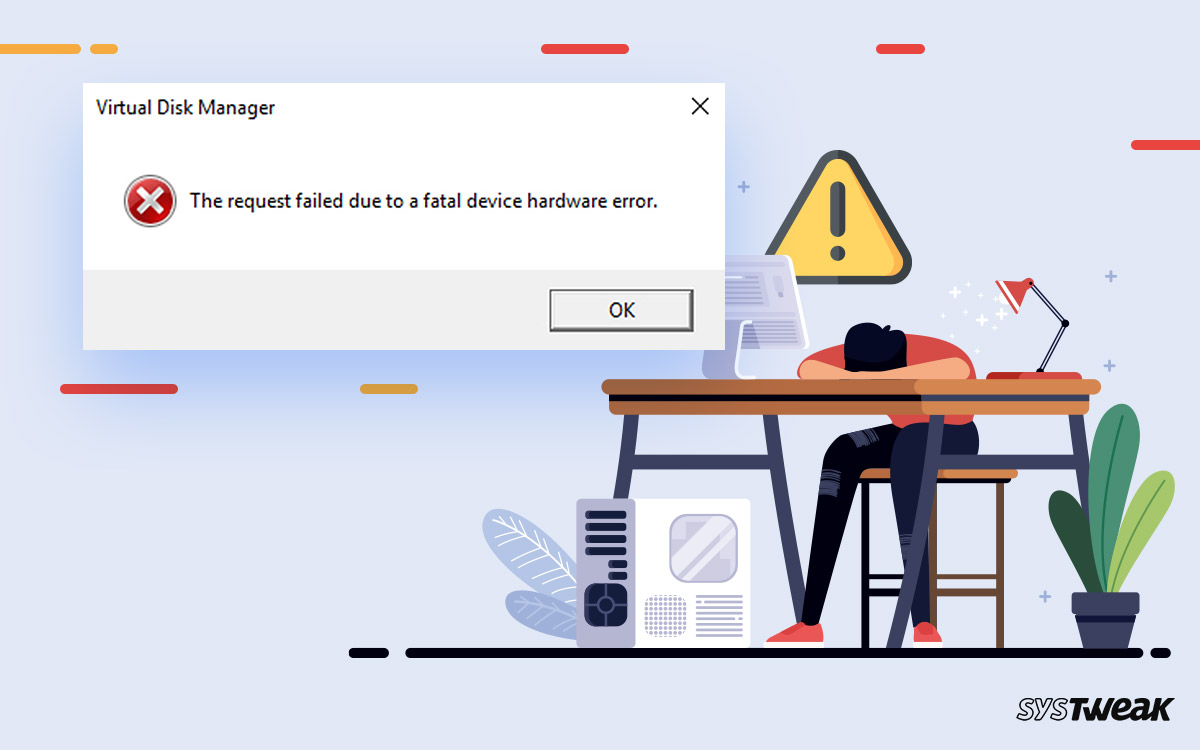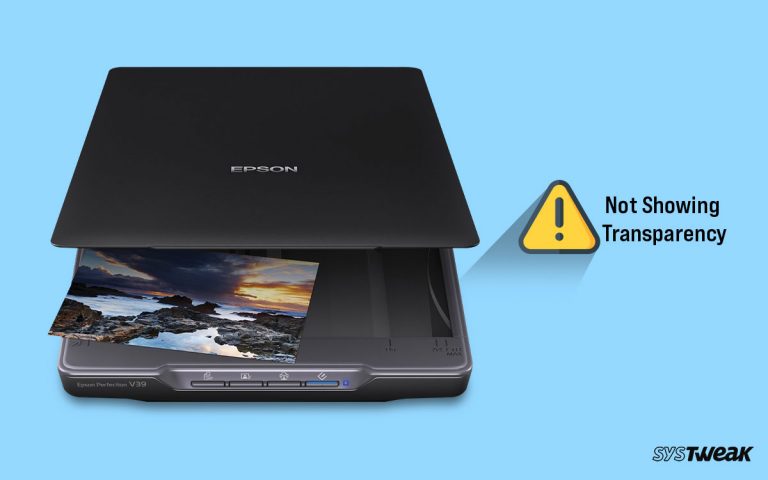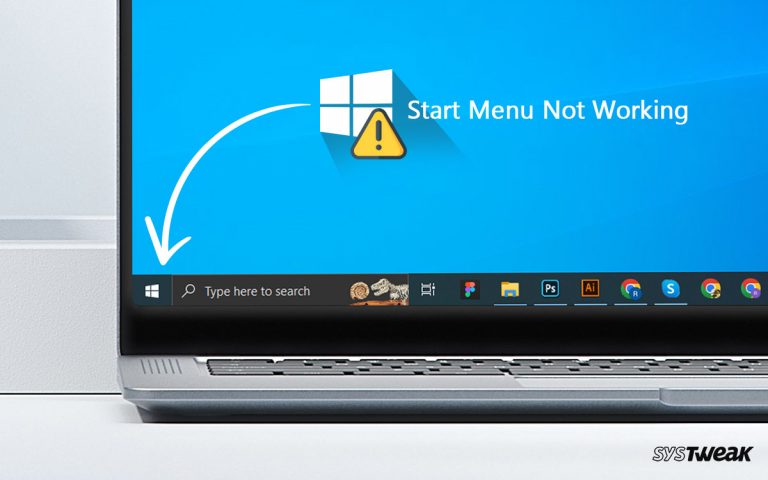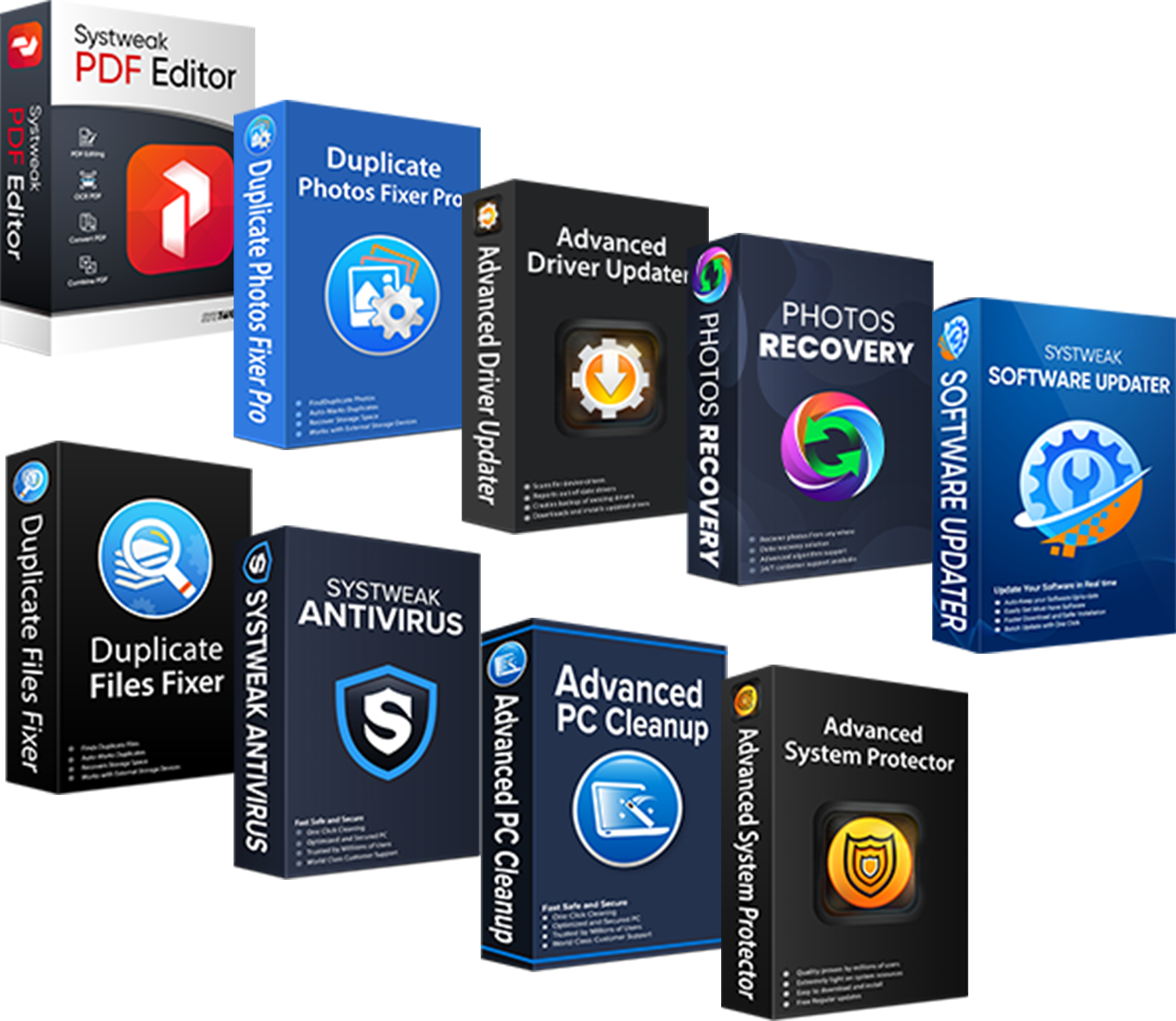It can be extremely frustrating to encounter the “Request Failed Due to A Fatal Device Hardware” error after connecting an external hard disk or a flash drive, especially when it’s urgent. If you have encountered a similar situation, you know exactly what we are discussing. The bad news is that the error will cause a delay in anything that you want to finish. However, the good news is that it can be fixed if you know what is causing it.
50% OFF

BLACK FRIDAY OFFERS
Unlock Black Friday Mega Savings — Systweak Tools FLAT 50% OFF!
If you are looking for a way to resolve “Request Failed Due to A Fatal Device Hardware” and avoid any inconvenience it may cause your PC, this is the post for you!
Here, we will list out the potential reasons that may be responsible for the error, along with some easy and effective ways to fix the error.
What is a “Request Failed Due to A Fatal Device Hardware” Error & Why It Appears?
Before we start with the fixes, it is really important to understand what the error is about and why exactly the issue has appeared.
The “Request Failed Due to A Fatal Device Hardware” error is usually associated with external storage devices. The error makes any connected drive, USB, or SD card unusable. Users often confuse it with a physical problem in the connected device. However, it is beyond that.
Sure, it is a possibility that the hardware is damaged or corrupt, but that is not the only driving factor. Some of the reasons why the “Request Failed Due to A Fatal Device Hardware” error comes up on Windows are –
- Connection Errors
- Conflicting Drive Name/Letter
- Outdated Drivers for the Device
- Disk Errors & Bad Sectors
- Corrupt Device Contents
As you can identify, the connection error is the only physical anomaly listed in the affected factors; the “Request Failed Due to A Fatal Device Hardware” error is more of a system error.
Fortunately, all these issues can be fixed easily. Check out the next section to find out how!
“Request Failed Due to A Fatal Device Hardware” – 5 Ways to Fix
Fix 1 – Change the Conflicting Driver Letter
In case you can see the connected drive and its name is in conflict with the existing internal partition, the error may appear. The best way to handle the situation is to change the letter.
Here are the steps to do so –
Step 1 – Open Windows Explorer and right-click on This PC.
Step 2 – From the opened menu, click on Manage.
On Windows 11, right-click on the same and then click on Show More Options to find “Manage.”
Step 3 – In the management Window, click Disk Management in the left panel to find all the drives on your PC.
Step 4 – Select the drive that conflicts with the connected drive and right-click on it to find the Change drive letter and paths. Click on the same.

Step 5 – In the opened Window, click on change to find available options.

Step 6 – After clicking on Change, you can find another Window with a dropdown menu with available letter names. Choose any and save changes by clicking on OK.

This will remove the redundancy of the drive letters, clearing the fatal device hardware error.
If the letter conflict was not the reason for the error, do not worry; we have other fixes in the lineup, too. Keep on reading!
Read Also: Top Ways to Fix Fatal Errors in Windows 10
Fix 2 – Update Drivers for the Disk Drives
Outdated disk drivers on PCs often cause issues in opening the drive. Hence, it is always better to keep them updated.
To update the drivers for connected disk drives, simply follow these steps –
Step 1 – Go to the Start menu and search for Device Manager. Click on the result to open it.

Step 2 – In the Device Manager, spot the Disk Drivers and click on the arrow to expand them.

Step 3 – Right-click on the drive causing the error and click on Update Driver.
Step 4 – This will open the Windows Driver Update utility. 
Step 5 – Click on Search Automatically for Drivers in the driver updater window and follow the instructions that appear on the screen.
This is the basic process you can follow to update the drive drivers. You might have observed that it is quite a lengthy process. To simplify these steps and to get things done quickly, we recommend you use the Advanced Driver Updater.
With the help of this tool, It only takes 3 steps to finish updating multiple drivers on a PC. These steps are –
Step 1 – Download and install the application from the link below.
Step 2 – Click Start Scan Now to initiate a scan for outdated drivers on the PC.

Step 3 – Once the scan is over, check the results and click on Update All to find the best available version for all of them.

It shortens the process and makes it hassle-free, as when you manually update the drivers, you have to repeat the process multiple times for different drivers. At the same time, the Advanced Driver Updater accumulates all the outdated entities and updates them all simultaneously.
Fix 3 – Use the CHKDSK Command to Remove Disk Errors
Probably, the disk you are connecting to is internally damaged or has bad sectors in it. There are tools available to manage disk errors individually. However, you can use the command prompt if you want to stick only to the internal tools.
The CHKDSK command is a handy code that helps you check the specific disk for errors. The command is capable of fixing these errors, too. Here’s how to use it –
Step 1 – Go to the start menu and search for the Command prompt.

Step 2 – Open the Command Prompt by clicking on Run as administrator.
Step 3 – In the CMD window, use the command – chkdsk h: /f/r (Replace h with the drive letter of the problematic disk)
Let the command run and finish the process. If any bad sectors or disk errors are found during the process, the command will attempt to fix them automatically.
Fix 4 – Fix the Unknown Not Initialized Situation
The best way to do so is to use the Disk Management tool and initialize the drive causing the error.
Step 1 – Open Windows Explorer and right-click on This PC.
Step 2 – From the opened menu, click on Manage.

(On Windows 11, right-click on the same and then click on Show More Options to find “Manage.”)
Step 3 – In the management Window, click Disk Management in the left panel to find all the drives on your PC.
Step 4 – In the Disk Management window, check the status of drives to determine if the drive is termed as unknown or not initialized.

Step 5 – After checking the status, if the drive is uninitialized, right-click on the drive and choose the initialize option.
Keep in mind that initializing the drive will remove all the data on the drive.
If none of the above fixes resolve the error for you, you might have to format the drive completely. That is because a few files on the drive may be stopping the drive from working correctly.
The shared insights on fixing the request that failed due to a fatal device hardware error will help you overcome the issue easily. If you get stuck at any step, feel free to reach out using the comment section, social media, or email! Thanks for reading. Good luck!
Recommended :
How To Fix Video_Dxgkrnl_Fatal_Error on Windows
‘PAGE FAULT IN NONPAGED AREA’ Error On Windows – FIXED





